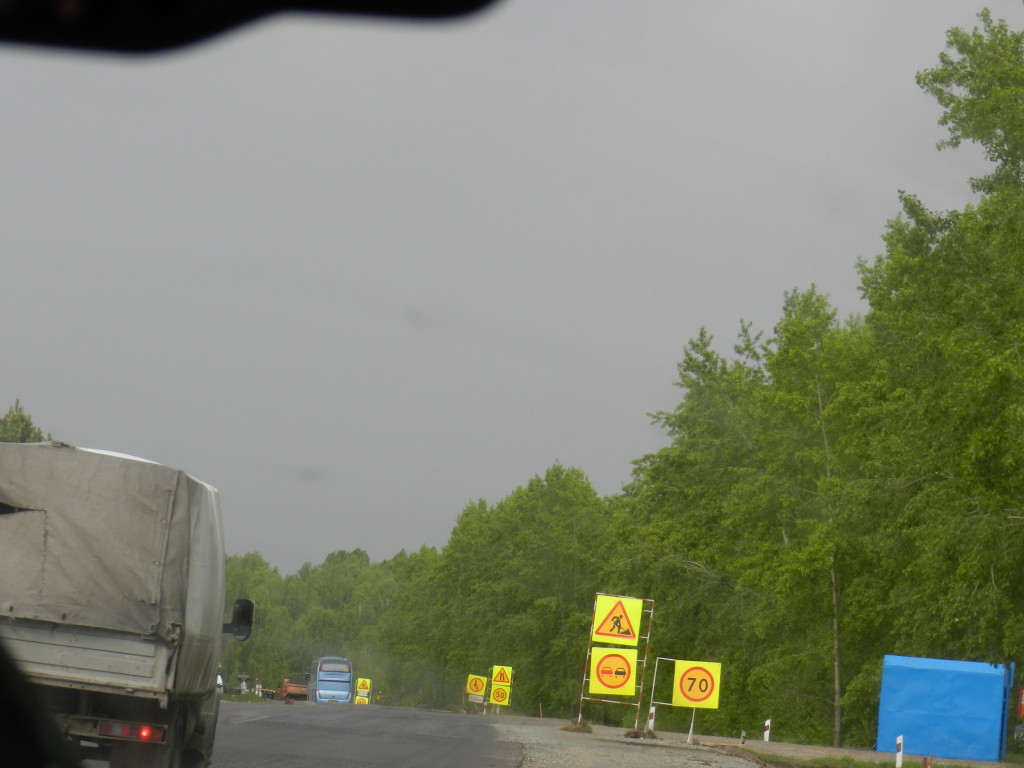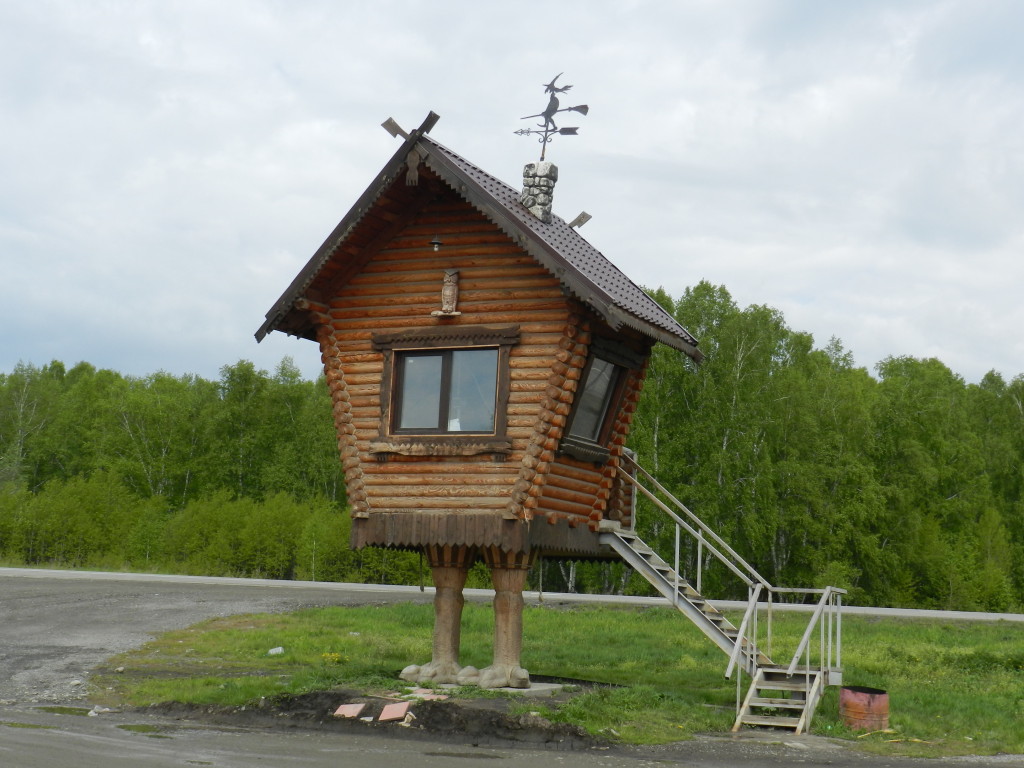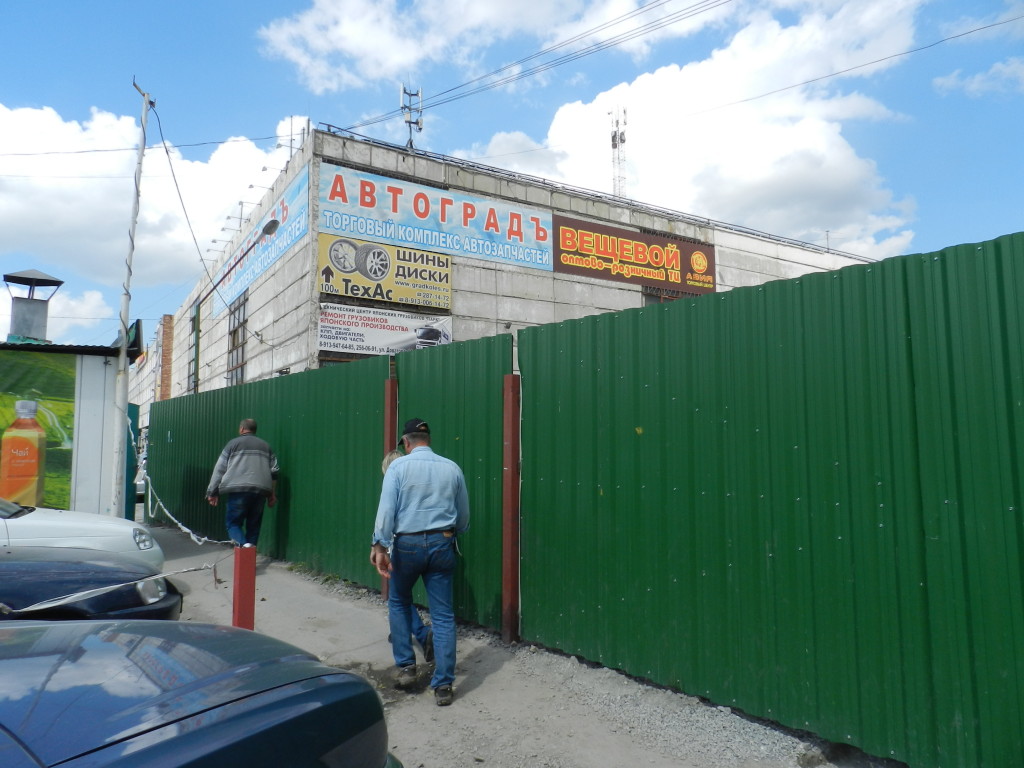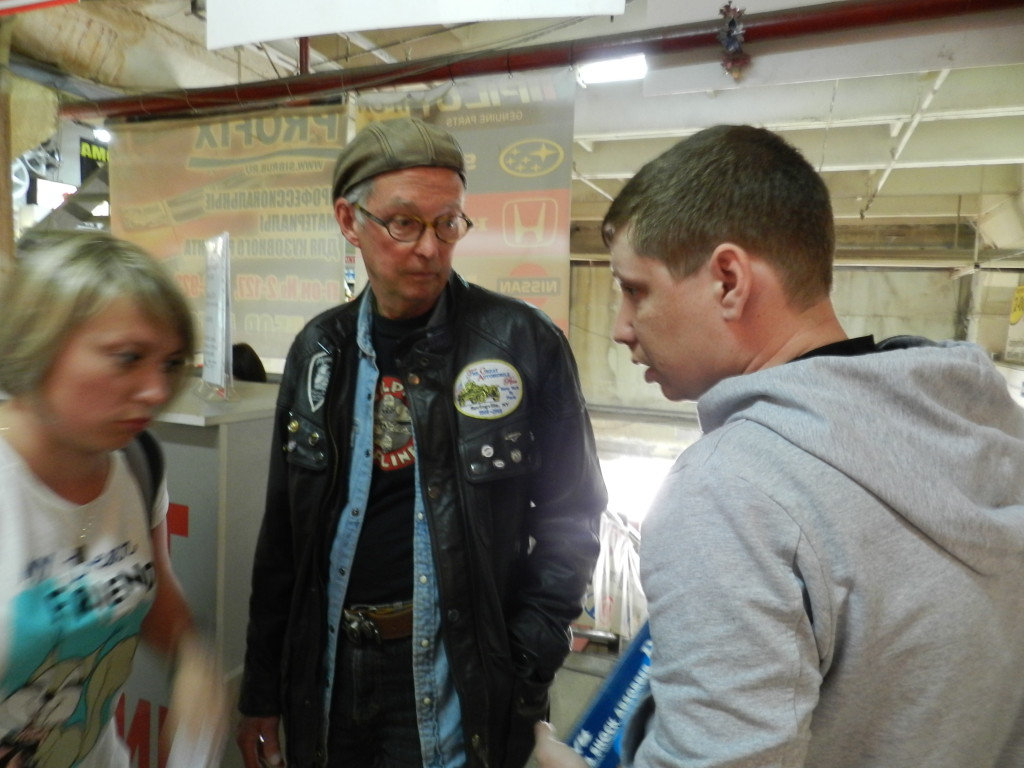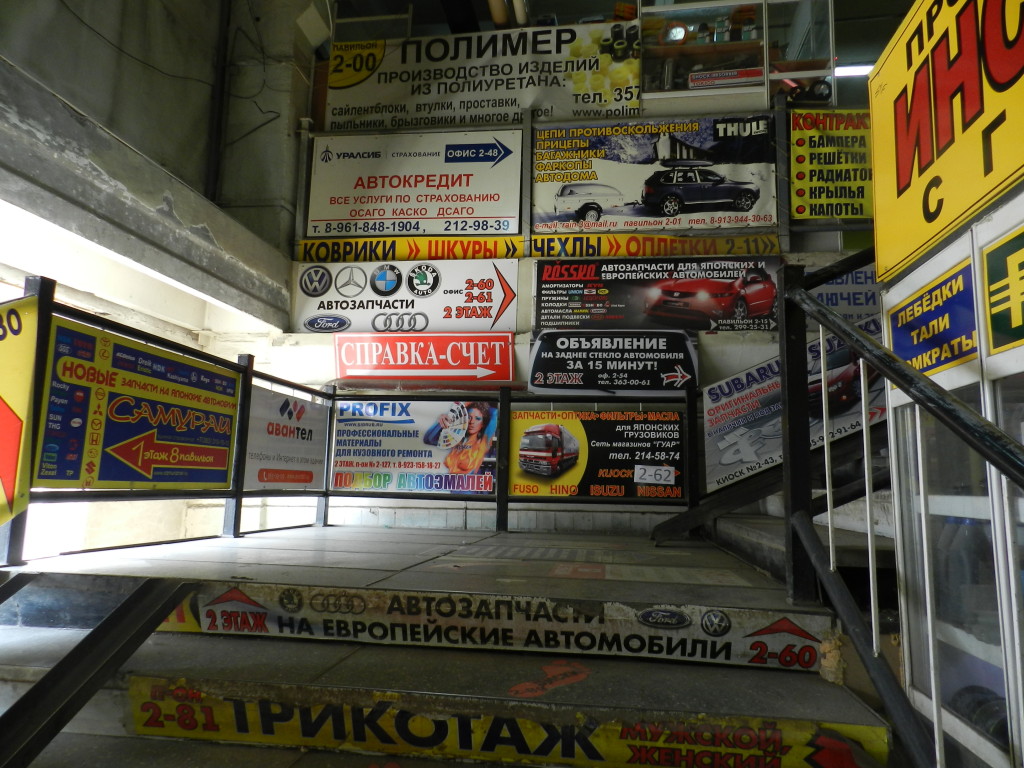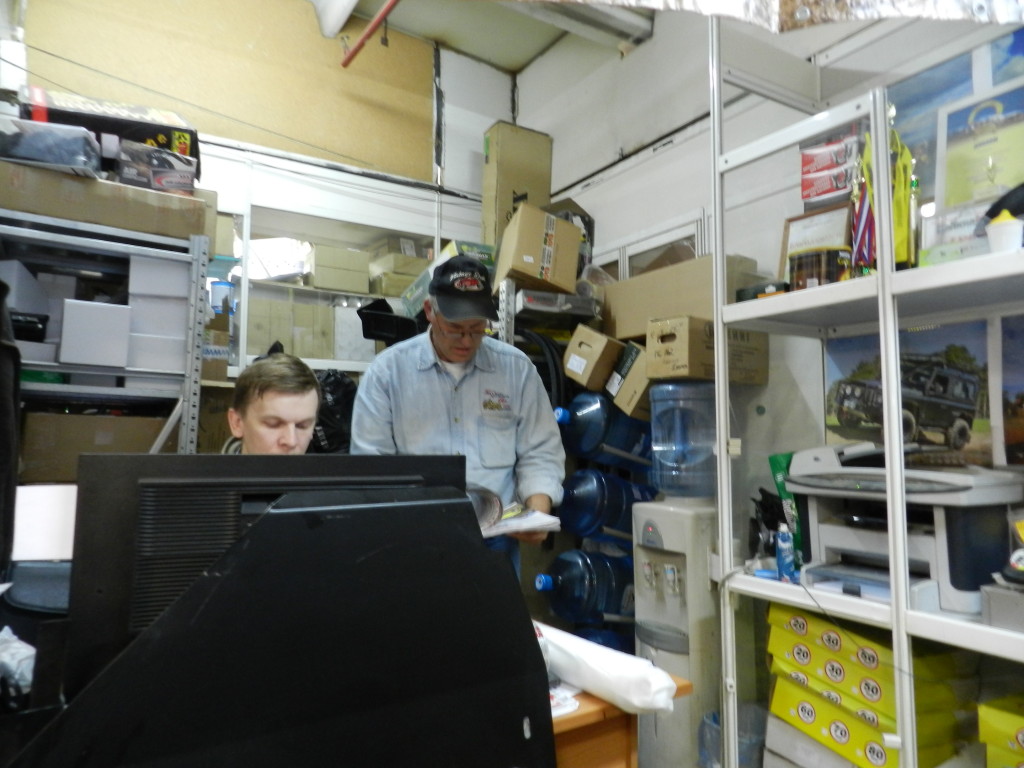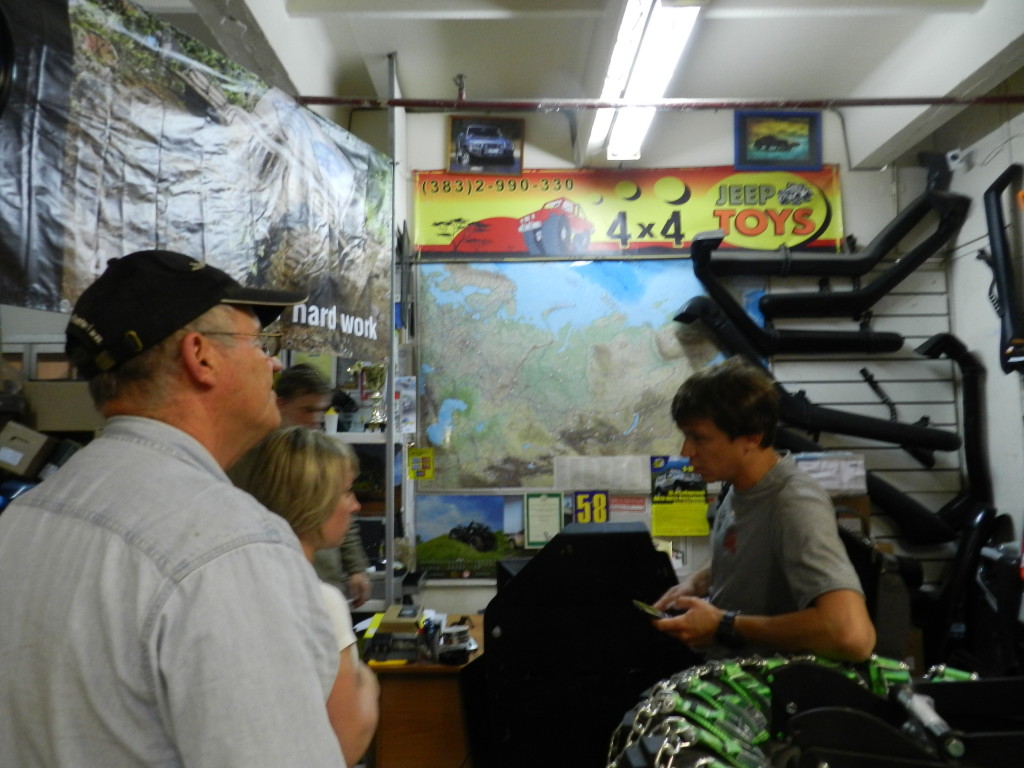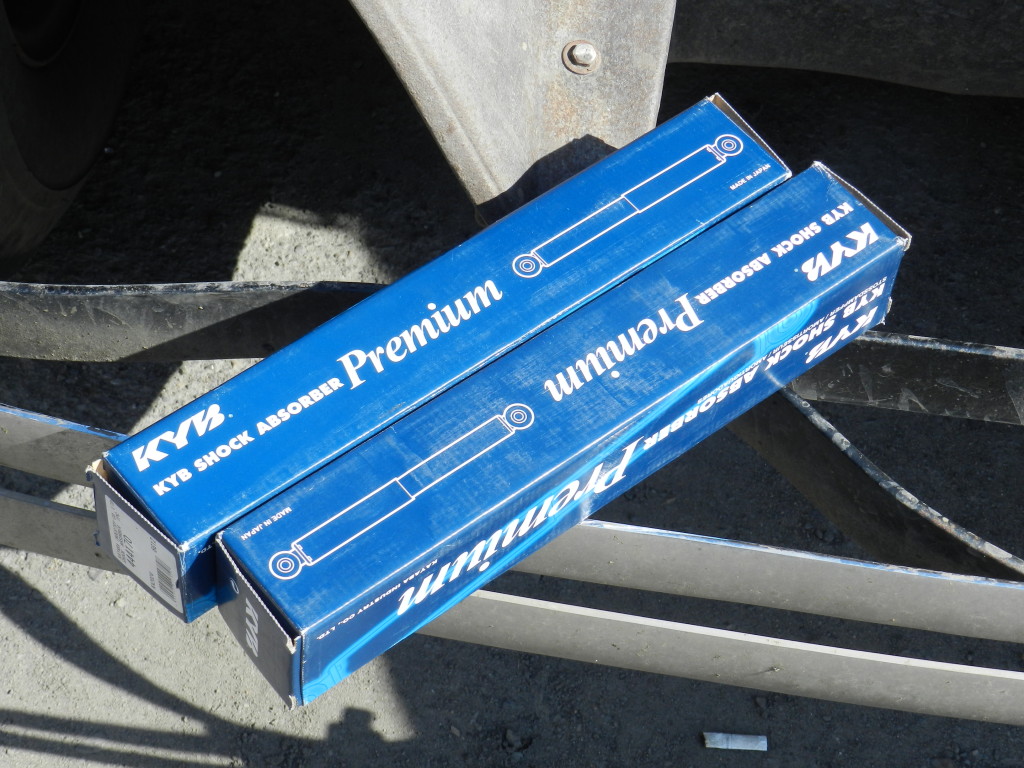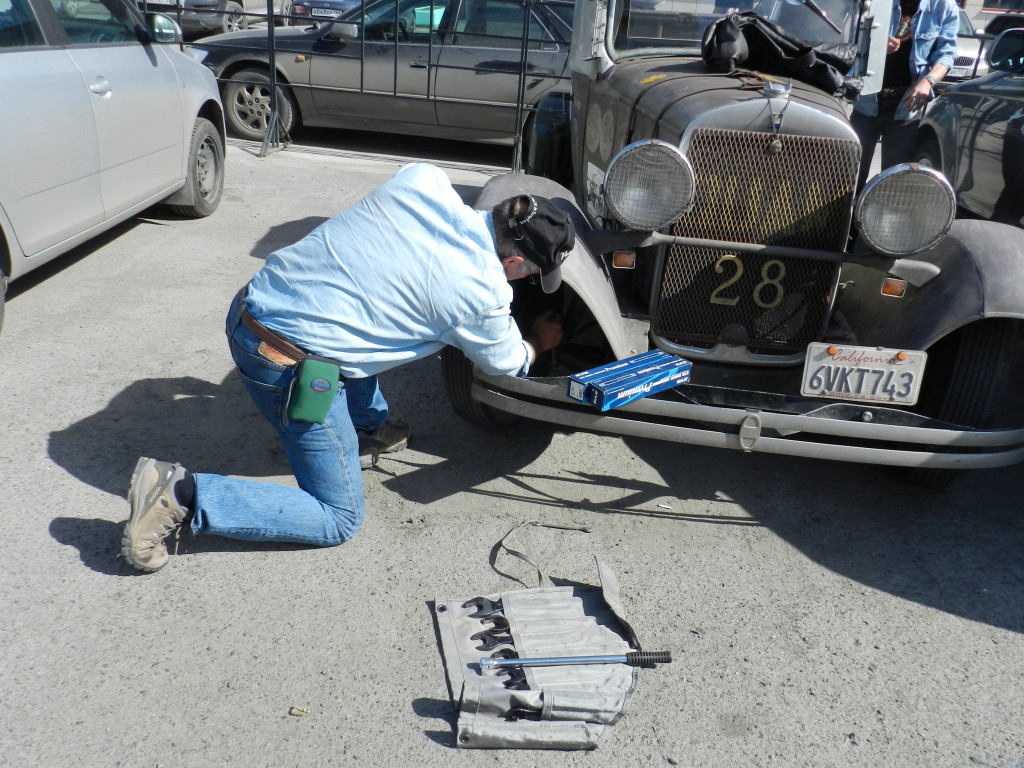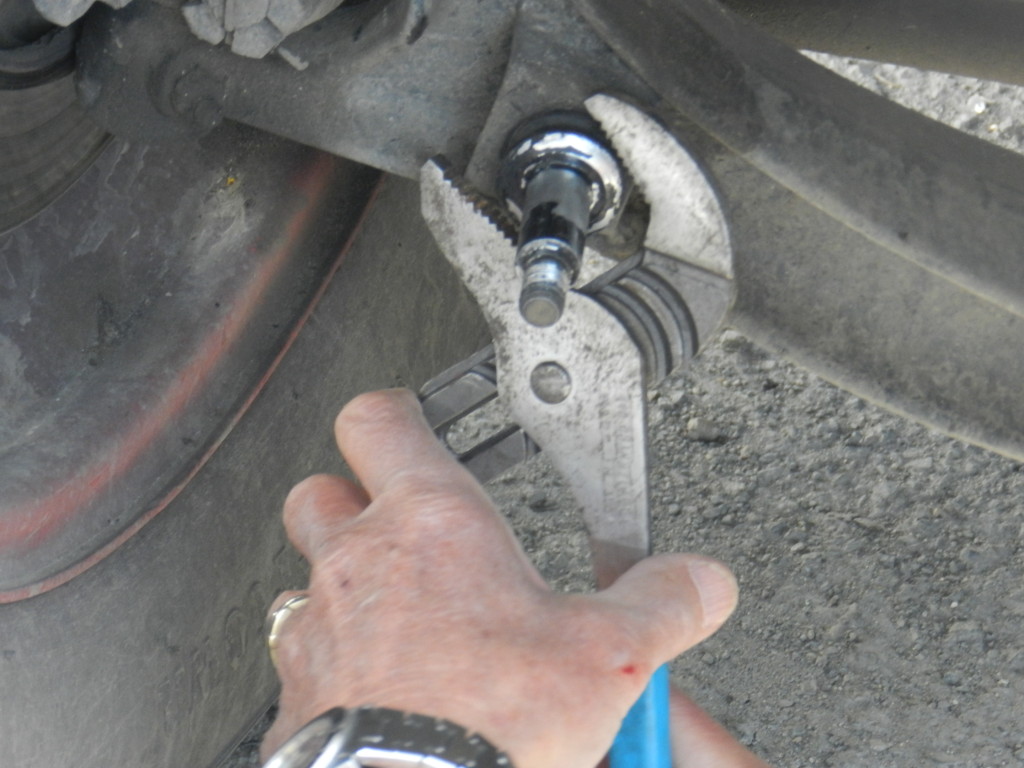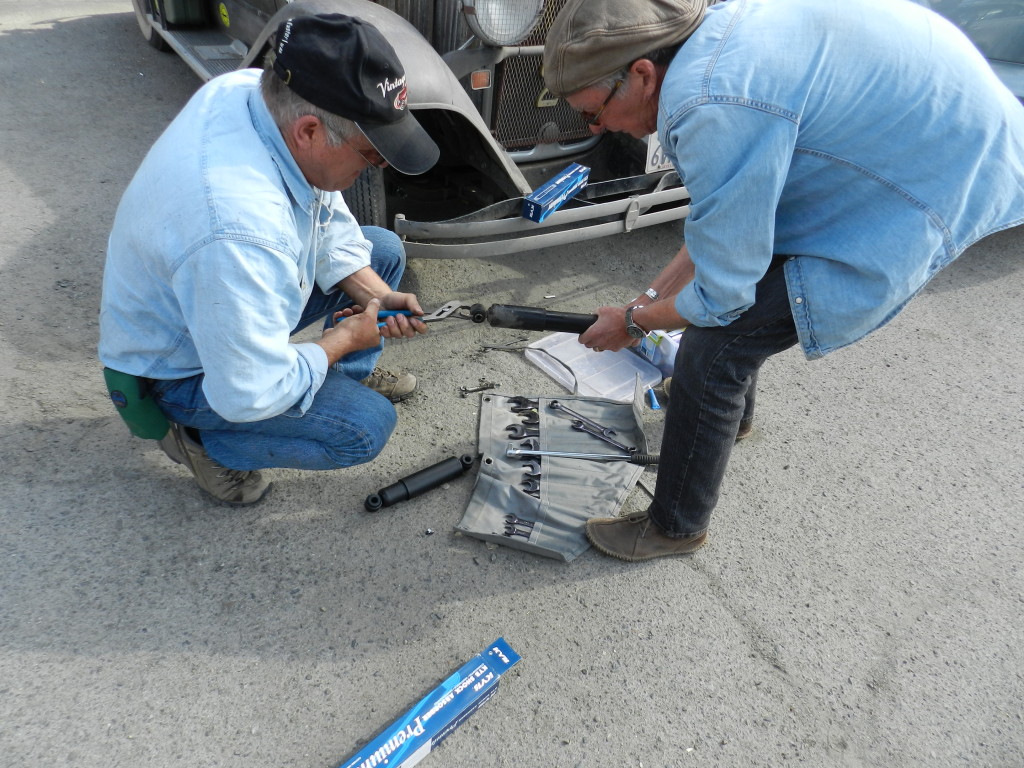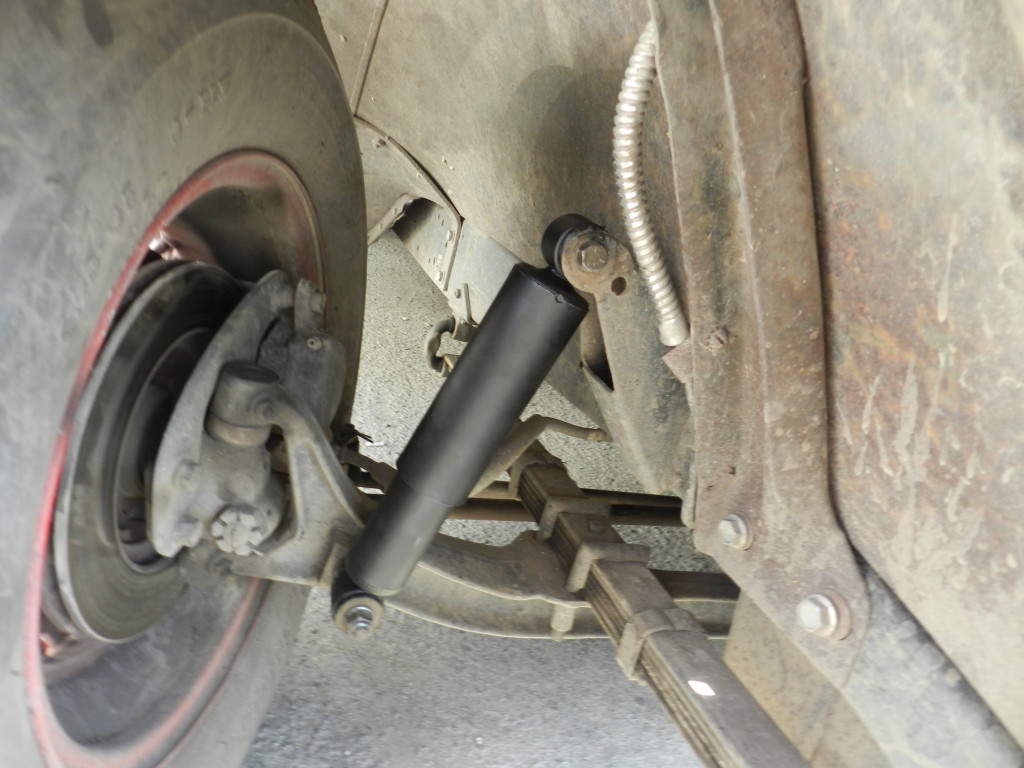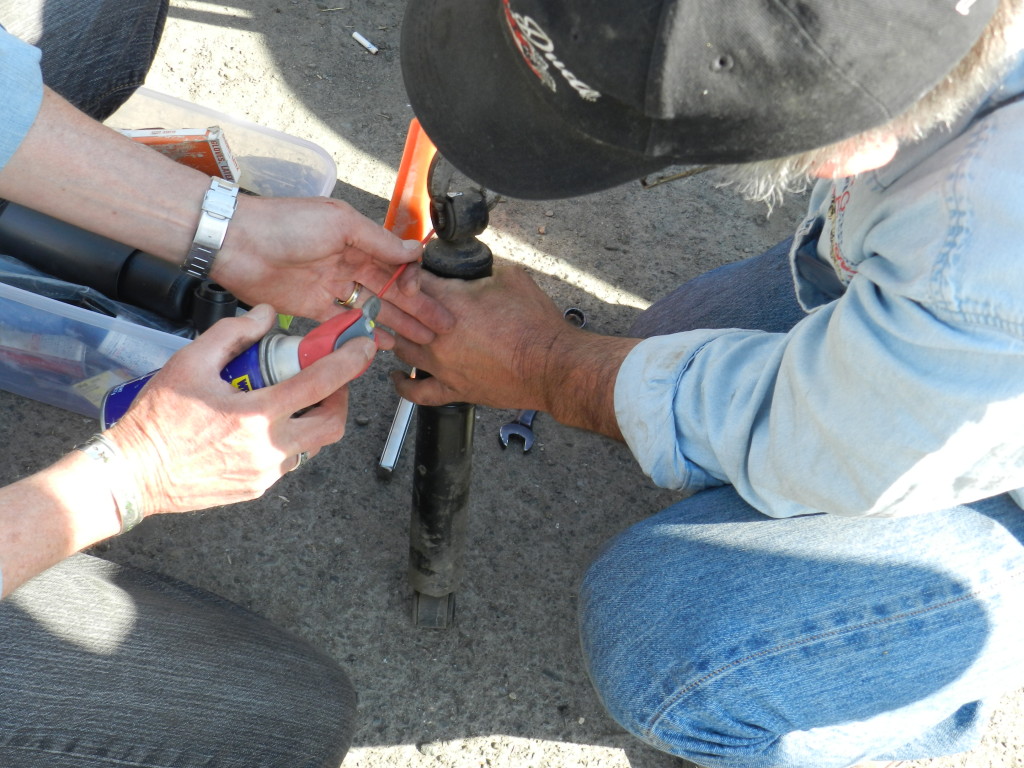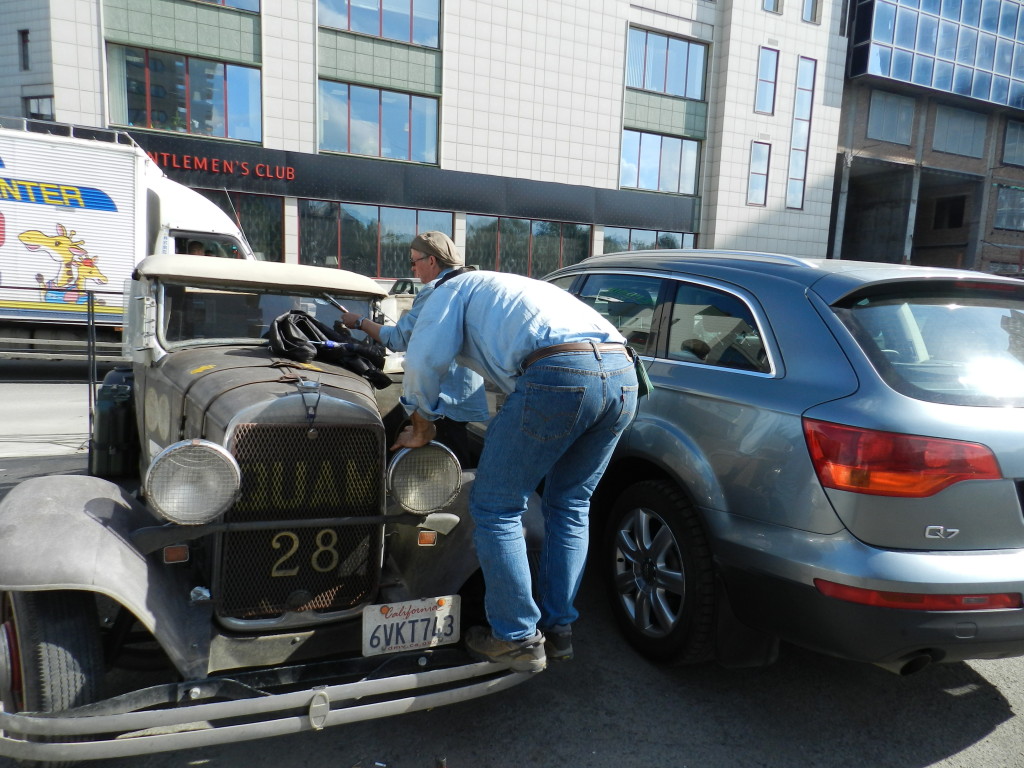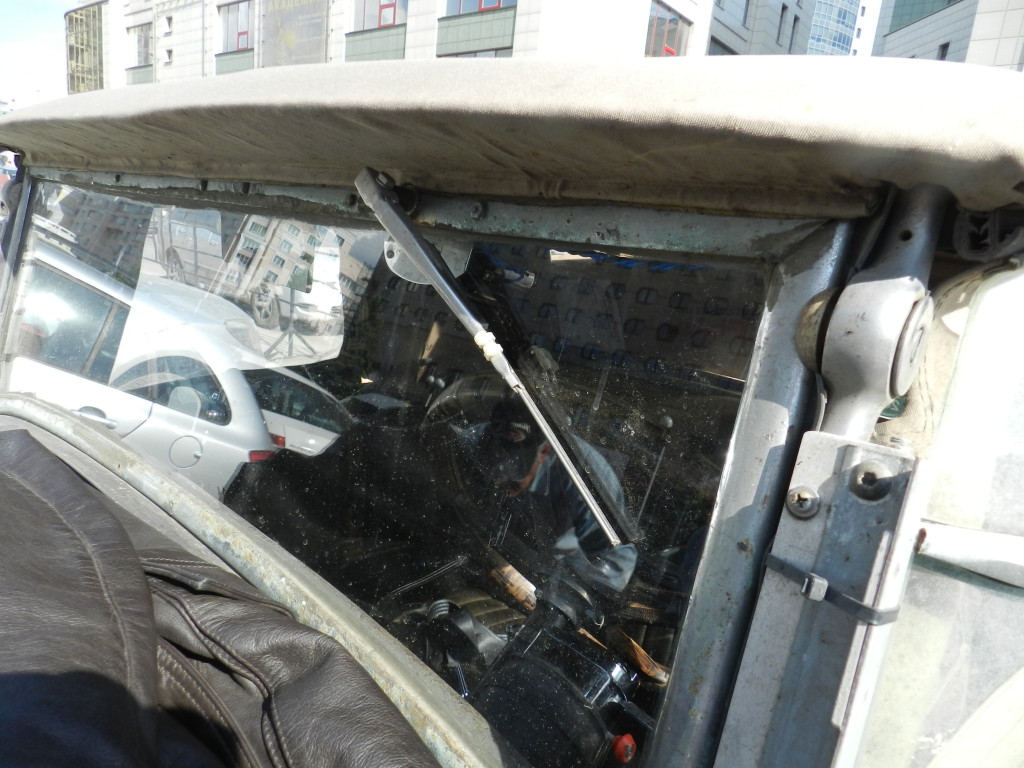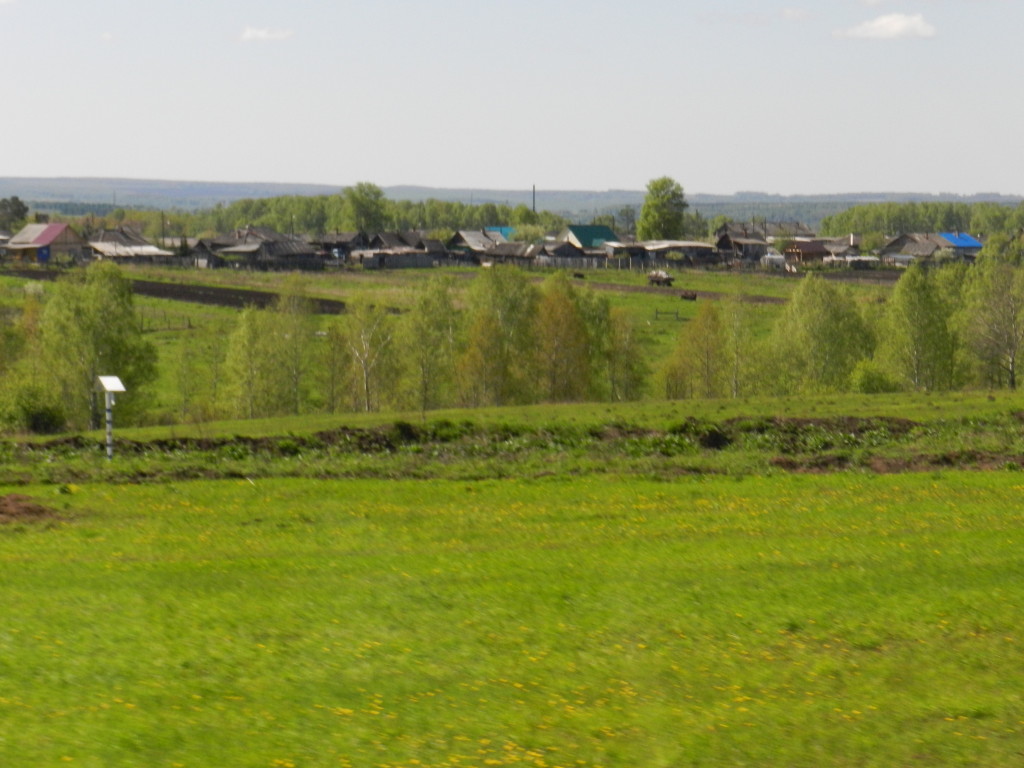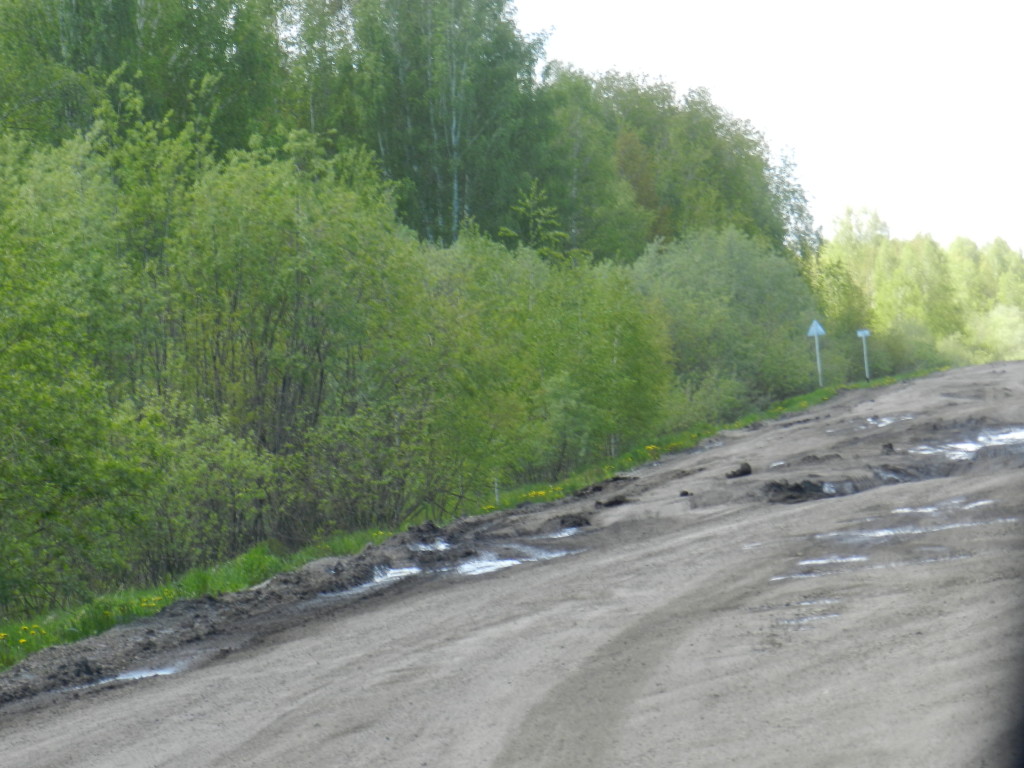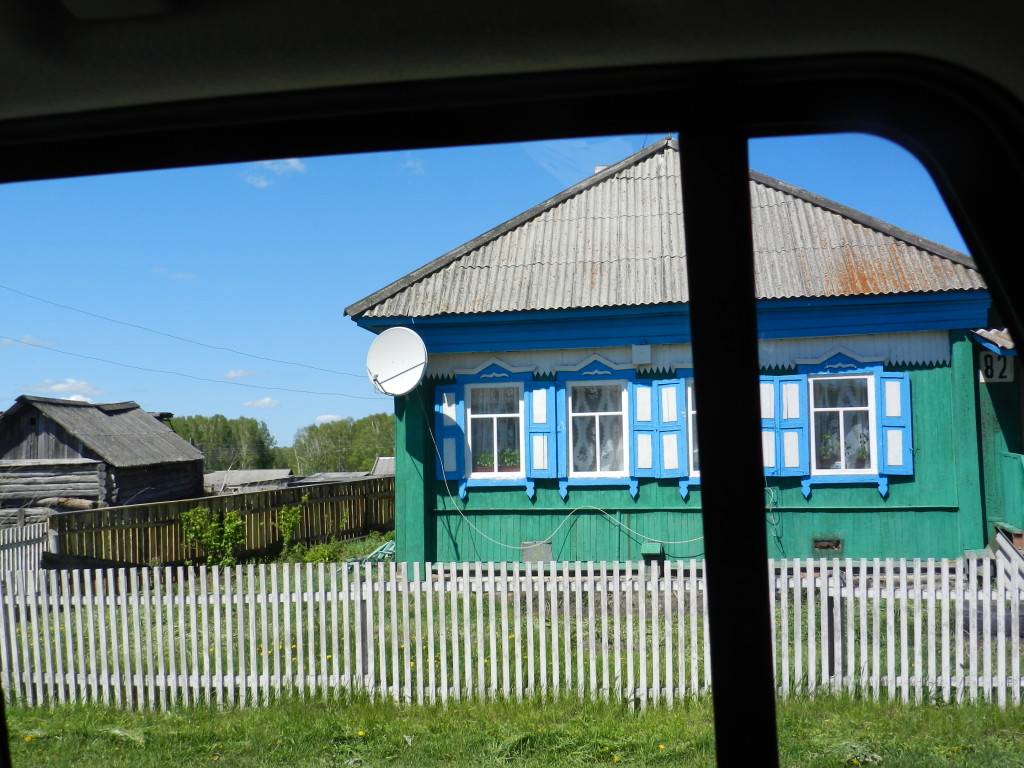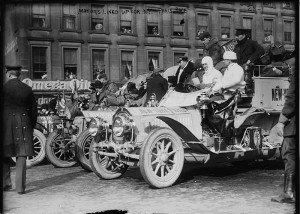Number of tie wraps: 8 (2 added since last post)
Countdown: 4021 miles down, 4564 to go
Roadster Shock Absorber Score: Russian Customs: 2, World Auto Tour: 0
Quote of the Day: “C’mon baby, spin!”
It was raining when we left Tomsk at about 8 a.m., but the weather improved later in the morning as we approached Novosibirsk. We encountered some construction on the way, but the drive was smooth overall, and we arrived at our hotel at about 1 p.m.
We saw this house on chicken legs when we stopped for rest and gas. The design originates from a Russian fairy tale.
Despite the relatively easy drive today, we received some bad news during the trip. The shock absorbers for the Roadster that we thought would be waiting for us in Novosibirsk never left the U.S. Apparently there is no way to get them through customs in a timely manner, so we’ve reverted to Plan C, or D, or maybe even E.
After checking into our hotel, we caught a taxi to an auto supply facility on the edge of town. The nondescript building in the photo below houses dozens of dealers of both new and used auto parts and accessories, sort of like an auto parts flea market. We figured if we couldn’t find the shocks there, we’re not likely to find them in Russia.
We found the front shocks on our second try, but the rear shocks, being air shocks, proved more difficult.
Luke and I went up to the second floor,
and found a vendor who spoke a little English, who tried to help us find a suitable substitution for the rear air shocks, since air shocks are virtually nonexistent in Russia.
After much consultation and attempts by at least four other vendors to find an alternative for the rear shocks, we gave up. Once again, everyone we encountered was extremely friendly and willing to go the extra mile to help us. The man on the right in the photo below, Aleksey, even offered to open his auto repair shop tomorrow (it’s a holiday here) to help us out. And our taxi driver waited patiently for 45 minutes for no extra charge while we sorted things out.
We arrived back at the hotel about 5 p.m. to begin installation of the front shocks.
First the right shock came off,
then a loose bolt had to be tightened,
and then Luke and John wrestled the bushing from the old shock to put into the new shock so the attaching bolt would fit right,
and then Luke installed the new shock. I’ve never seen a more beautiful shock in my entire life.
They then repeated the process for the left shock, although the old bushing on that shock proved to be a bit more challenging to remove, but nothing that a little WD-40 didn’t help take care of. This is also where we got the quote of the day from Luke: “C’mon baby, spin!”
Finally, Luke tested the new shocks by jumping on the bumper.
Two more tie wraps have joined the Roadster, this time to make the sole windshield wiper work better.
Tonight at dinner, we debated what to do about the rear shocks, and we now have a plan that involves getting some air shocks to Moscow, an aerosol can of flat tire repair, several large pieces of heavy rubber, and lots of duct tape. As I believe Dave Barry once said, no problem is too large that it can’t be fixed with a hammer, a can of WD-40 and a roll duct tape. Before this is all over, I think we will have used all three. If anyone out there has any other ideas, please let us know!
Tomorrow we look for some things to help fix the Roadster further and perhaps visit a railroad and car museum before we join the Russian holiday festivities in the evening. Assuming we survive all that, we head to Omsk on Friday, a drive of about 420 miles, the second-longest drive of the trip.
